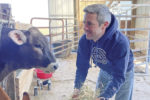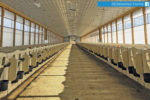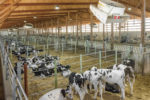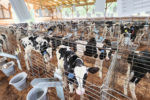Calves & Heifers
In order to become more economical and sustainable, dairies should focus on increasing the productive life of their animals. This also meets consumer demands for transparency and animal care.
Read More
Feeding show heifers during different stages of growth
Age and development heavily influence growth. Before and after weaning, a heifer can put more energy toward her stature growth than after she begins to cycle.
Read More
Can your calves pass these tests?
While every operation is different, key tests and measurements can indicate a farm’s ability to raise calves well. These include passive transfer, feeding hygiene, housing cleanliness and comfort, and a calf’s growth rate and health markers.
Read More
Calves can vote too: Preferences for hutch ventilation during summer
Study shows that by 6 weeks old, calves show a significant preference for ventilated hutches, and ventilated hutches can help reduce heat stress. Additionally, pair-housed calves spent 80% of their time together.
Read More
Heifers and long-day lighting: What we know so far
Long-day lighting recommendations for heifers are the same as lactating cows: 16-18 hours of light and 6-8 hours of darkness in the barn.
Read More
The hidden enemy: How oxidative stress impacts dairy calves and what you can do
Awareness of how common calf management practices can induce oxidative stress is the first step in managing for it.
Read More
Calves under the sun: Navigating heat stress challenges
Heat stress can have lifelong negative impacts on calf health and performance. Shade, air flow, the THI chart and electrolytes are all essential tools for mitigating this issue.
Read More
Calf scours prevention begins before birth
Twelve years ago, researchers estimated that a case of scours cost $56 per head, but that number is likely significantly lower than it should be. To minimize this, farms should focus on genetics, dry cow management, colostrum and transition milk.
Read More
Some surprising research results from our calf facility
Increasing milk replacer mixing temperature has a positive impact on calf growth, and feeding IgYs could be a good way to reduce mortality numbers in the calf herd.
Read More





.jpg?height=125&t=1710528430&width=150)

